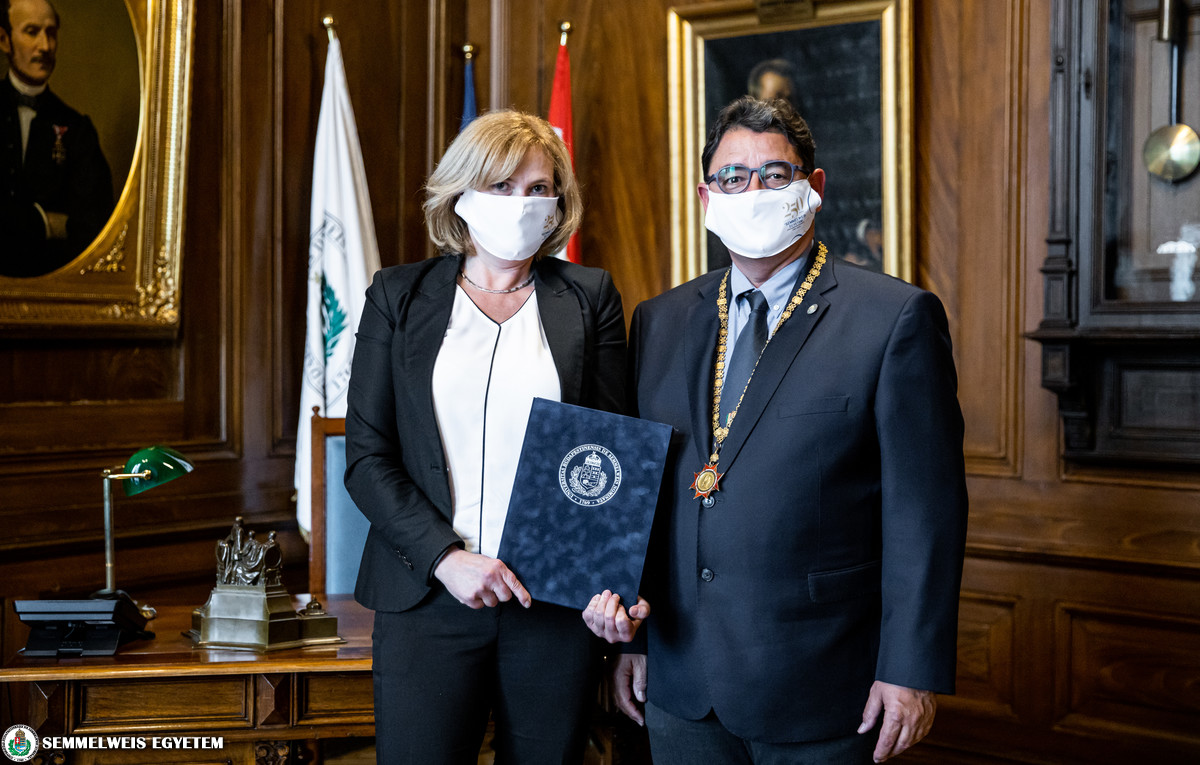 The Pro Universitate Award is given to individuals who have contributed significantly in the course of their work to helping the university achieve its goals, as well as help its development and expansion.
The Pro Universitate Award is given to individuals who have contributed significantly in the course of their work to helping the university achieve its goals, as well as help its development and expansion.
“Thanks to the preparedness and conscientiousness of Dr. Judit Palkó, the infection was quickly confirmed in the patient, thus the virus, which was present in the closely-knit Iranian community, was successfully isolated and eliminated,” emphasized rector Dr. Béla Merkely upon presenting the honor.
Dr. Palkó graduated summa cum laude from Semmelweis University in 1994 in general medicine, later securing specialties in family medicine and occupational medicine. She has been working in the GP’s office under Közraktár utca 24 since 2005, and has been the doctor assigned to international medical and pharmacy students of Semmelweis University for seven years. She has been teaching at the university’s Department of Family Medicine for eight years.
She had been closely monitoring the coronavirus epidemic since its start in China, as she was also in contact with the university’s Chinese students. That was why she deemed its important to follow the recommendations of the World Health Organization and the European Center for Disease Prevention and Control, and to report regularly to the experts taking part in the epidemiological defense of the country. She first met the Iranian student in question in her GP office, whom she immediately sent to get tested as a suspected coronavirus case.
Since then, Hungarian phylogenetic studies have proven that the epidemic in Hungary did not start from one person, but entered the country via several routes mostly through guest workers returning home from Western Europe. The rapidly implemented restrictions in Hungary, similar to several other countries, successfully prevented the development of a full-blown epidemic as was seen in Italy, Spain, the USA and China.
Orsolya Dávid
Translation: Tamás Deme
Photo: Attila Kovács – Semmelweis University



